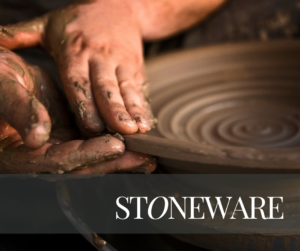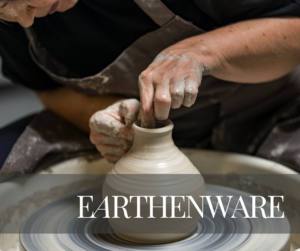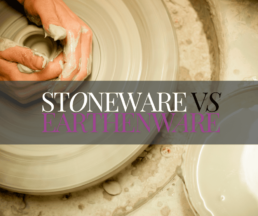Stoneware vs. Earthenware Clay
Stoneware vs. Earthenware
When delving into the world of ceramics, you will very quickly encounter the vast array of clay types, each with its unique characteristics and potential. Among the myriad of options, two prevalent types stand out. Stoneware clay and Earthenware clay.
While both play pivotal roles in the creation of ceramics, they possess distinct compositions, properties, and applications that cater to diverse artistic visions and practical needs.
So lets dive in to the differences between them...
Understanding Stoneware Clay >>>

Stoneware clay, renowned for its durability and versatility, holds a cherished place in the realm of ceramics. Composed primarily of fine-grained minerals like silica, alumina, and various fluxing agents and is produced using a blend of fireclays, ball clays and china clay. Stoneware clay boasts exceptional strength and resilience when fired at high temperatures. This durability renders stoneware suitable for functional pottery, such as dinnerware, cookware, and even architectural elements like tiles.
One hallmark feature of stoneware clay is its ability to undergo vitrification which is a process in which the clay particles fuse together, forming a dense, non-porous structure. This transformation occurs during firing, typically between 1150°C to 1260°C, resulting in pottery that is not only robust but also impermeable to liquids, making it ideal for food-safe applications.
Furthermore, stoneware clay offers a broad palette for artistic expression. It's smooth texture allows for intricate carving, sculpting, and glazing techniques, enabling artisans to craft elaborate designs and achieve rich surface finishes. Whether creating functional vessels or decorative sculptures, stoneware clay provides a reliable foundation for realising diverse artistic visions.
The plasticity of Stoneware clay makes it exceptionally responsive to wheel throwing and hand-building techniques, such as coiling, pinching, and slab construction. Its forgiving nature encourages experimentation and spontaneity, empowering artists to explore organic forms and tactile surfaces.
Exploring Earthenware Clay >>>

In contrast to stoneware, earthenware clay embodies a more primal essence and malleable nature. Comprised of finely ground particles, including minerals like quartz, iron oxide, feldspar and other fluxes such as limestone and dolomite, earthenware clay possesses a lower firing temperature range, typically between 1000°C to 1150°C.
This lower firing temperature not only makes earthenware more accessible for amateur potters and small-scale studios but also imbues the clay with distinct aesthetic qualities. When fired, earthenware retains its porous nature, allowing it to breathe and interact with its environment. While this porosity makes earthenware less suitable for holding liquids without proper glazing, it lends itself beautifully to decorative pottery, tiles, and sculptural pieces.
Additionally, earthenware readily accepts a wide range of surface treatments from vibrant underglazes to atmospheric firings, resulting in pottery imbued with warmth and character. Due to lower firing temperatures, brighter coloured glaze finishes can be achieved that higher firing temperatures can often mute.
Conclusion >>>
In essence, stoneware clay and earthenware clay represent two distinct yet equally captivating facets of ceramic artistry. While stoneware epitomises strength, durability, and refined craftsmanship, earthenware fosters creativity and exploration.
Which is your favourite?
Are you camp Stoneware or camp Earthenware? Or a bit of both?
We would love to hear from you and feature your work!
Tag us in your latest creations on Social Media, or email us on sales@valentineclays.co.uk

